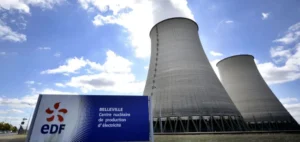Saudi Arabia alone has enormous potential to produce blue hydrogen from natural gas.
Saudi Arabia has considerable renewable energy resources
Olivier Thorel, Vice President of Chemicals at Saudi Aramco, says:
“Hydrogen represents a huge opportunity for the Middle East, where the abundance of renewable solar and wind energy is an advantage over other parts of the world. The country is also building large-scale carbon sequestration infrastructure and focusing on expanding its low-carbon gas resources.”
The future NEOM city is part of Saudi Crown Prince Mohammed bin Salman’s flagship Vision 2030 project, designed to diversify the economy away from oil.
Among other new energies, the city would require more than 2.2 GW ofgreen hydrogen.
Aramco tackles blue and green hydrogen head-on
Aramco will increase its gas production, while supplying raw materials to support the growth of its chemicals and hydrogen sectors.
Its Jafurah shale play will produce up to 2 billion cubic feet per day of gas, 418 million cubic feet per day of ethane and 630,000 barrels of oil equivalent per day of gas liquids and condensates by 2030.






















